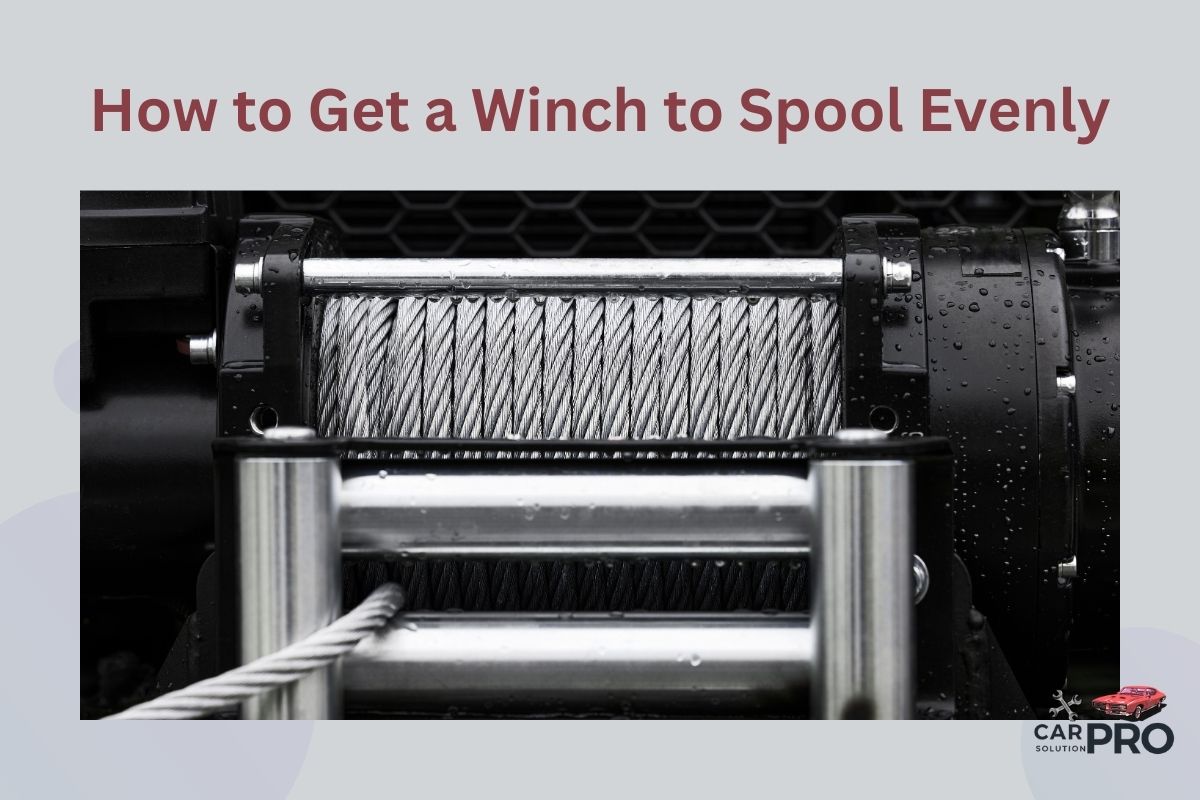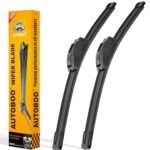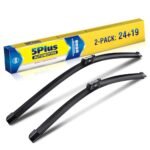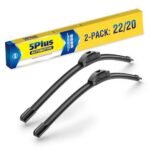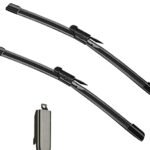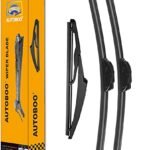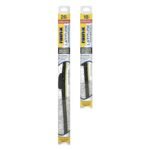Winch spooling plays a key role in the performance and longevity of your equipment. When a winch cable spools unevenly, it can lead to reduced pulling power and potential damage. Proper spooling ensures the winch cable winds evenly around the drum, maximizing efficiency and safety during use.
Getting a winch to spool evenly involves a few simple steps. By following the right techniques, users can achieve a neat and tight wrap that prevents cable tangling and extends the life of their winch. This process requires attention to detail and a bit of patience, but the results are well worth the effort.
A well-spooled winch not only looks better but also performs more reliably when needed most. Whether for off-road recovery or heavy-duty pulling tasks, an evenly spooled winch stands ready to tackle challenges with optimal strength and durability.
Key Takeaways
- Even spooling improves winch performance and prevents cable damage
- Proper tension and guidance are essential for achieving an even wrap
- Regular maintenance and careful operation help maintain optimal winch function
Understanding Winch Spooling
Winch spooling affects how well a winch performs. Even spooling helps the winch work better and last longer. It also makes the winch safer to use.
Basics of Winch Operation
A winch uses a motor to wind a cable or rope onto a drum. The drum turns to pull in the cable. Winches have a clutch that lets the cable move freely when not in use.
To start winching, engage the clutch. This connects the motor to the drum. Then use the controls to wind in the cable. Most winches have a remote control or a switch on the winch.
The cable should wrap evenly around the drum as it winds in. Even wrapping prevents tangling and damage. It also helps the winch pull with full strength.
Importance of Even Spooling
Even spooling makes the winch work better. When the cable is wound neatly, it doesn’t get stuck or tangled. This lets the winch pull smoothly and strongly.
Uneven spooling can cause problems:
- Cable damage
- Reduced pulling power
- Jerky operation
- Premature wear on winch parts
Even spooling also keeps the winch safe. Tangled cables can snap under load. This is very dangerous. Neat spooling reduces this risk.
To spool evenly, guide the cable as it winds. Apply light tension to the cable. Move it back and forth across the drum. This helps create neat, even layers.
Preparation for Spooling
Getting ready to spool your winch properly involves a few key steps. These include choosing the right cable and making sure your winch is in good working order.
Selecting the Right Winch Cable
Picking the right cable is crucial for even spooling. Steel cables are strong but can be hard to handle. Synthetic ropes are lighter and easier to use.
When choosing a cable:
- Match the length and strength to your winch’s specs
- Consider the material’s durability for your needs
- Check that the cable diameter fits your winch drum
Synthetic ropes often spool more evenly than steel cables. They’re also safer if they break under tension. But steel cables might be better for rough conditions or frequent use.
Winch Inspection and Maintenance
Before spooling, check your winch carefully. Look for any damage or wear that could cause problems.
Key inspection points:
- Examine the drum for cracks or dents
- Check the fairlead for smooth operation
- Ensure the motor and gears work properly
Clean the winch drum thoroughly. Remove any dirt or old lubricant. This helps the cable spool evenly. Apply a light coat of suitable lubricant if needed.
Test the winch controls. Make sure they work smoothly. Fix any issues before you start spooling. Good maintenance helps prevent problems during use.
Spooling Techniques
Proper spooling techniques are key to getting a winch to spool evenly. Two main methods help achieve smooth and uniform winding of the cable onto the drum.
Layer-by-Layer Method
The layer-by-layer method is a careful approach to spooling. Users start by guiding the cable onto one end of the drum. They slowly move it back and forth across the drum’s width. This creates an even first layer.
For the next layer, the process is repeated. The cable is guided to sit neatly on top of the first layer. This continues for each layer until the drum is full.
Care must be taken to avoid gaps or overlaps. Small spaces between cable wraps are normal. Large gaps can cause issues later.
Tension Control During Spooling
Maintaining proper tension is crucial for even spooling. Too little tension leads to loose winding. Too much can damage the cable or drum.
A good rule is to keep 10% of the winch’s rated line pull as tension. For a 10,000-pound winch, aim for about 1,000 pounds of tension.
Some ways to create tension:
- Use a heavy object as an anchor
- Have a helper apply resistance
- Use a snatch block to increase the load
Consistent tension throughout the spooling process helps create tight, even layers. This prevents future tangling or binding issues.
Troubleshooting Uneven Spooling
Uneven spooling can cause problems with winch performance. Fixing this issue requires identifying the root cause and making proper adjustments.
Identifying Common Issues
Inspect the winch drum closely to spot uneven spooling. Look for gaps between cable wraps or bulges on one side. Check if the cable is crossing over itself as it winds onto the drum. This can lead to binding and damage.
Examine the fairlead for signs of wear or misalignment. A damaged fairlead can cause the cable to spool unevenly. Make sure the winch is mounted level and square on the vehicle. Improper mounting angles can affect spooling.
Test the winch under load. Uneven spooling often becomes more apparent when the cable is tensioned. Pay attention to any grinding noises or jerky movements as the winch operates.
Adjusting Spooling Tension
Proper tension is key for even spooling. Start by fully extending the winch cable. Apply a moderate load to create resistance as you reel it back in.
Use a helper to guide the cable onto the drum. They should maintain steady tension and feed the cable evenly across the drum width. For synthetic rope, wear gloves to avoid rope burn.
Adjust the clutch if available. A slightly tighter clutch can help maintain consistent tension. Be careful not to overtighten, as this can strain the motor.
For persistent issues, consider using a cable tensioner. This device attaches to the fairlead and provides consistent pressure as the cable spools. It helps eliminate slack and ensures tight, even wraps.
Safety Considerations
Proper safety practices are crucial when using a winch. These measures protect you and others from potential injuries and equipment damage.
Personal Protective Equipment
Wearing the right gear is essential for winch safety. Gloves are a must to protect hands from rope burns and cuts. Choose heavy-duty work gloves with good grip.
Eye protection is also important. Safety glasses or goggles shield eyes from debris or snapped cables. A hard hat adds protection for your head in case of falling objects.
Sturdy boots with non-slip soles help maintain footing on uneven ground. Avoid loose clothing that could get caught in the winch mechanism.
Safe Operating Procedures
Always inspect the winch and cable before use. Look for frayed wires, kinks, or other damage. Replace worn parts immediately.
Keep bystanders at a safe distance. The “danger zone” extends to twice the length of the cable being used. Mark this area clearly if possible.
Never wrap the winch cable around your hands or body. Use a hook or tree strap to connect to anchor points.
Operate the winch slowly and steadily. Avoid jerky movements that could cause cable snapping. Stop winching if you hear unusual noises or see smoke.
Use a cable damper or heavy blanket over the cable. This reduces whiplash if the cable breaks under tension.
Always disconnect the winch from its power source when not in use. This prevents accidental activation.
Frequently Asked Questions
Proper spooling techniques, equipment factors, and maintenance all play key roles in achieving even winch cable layering. Tension, approach angles, and rope types also impact spooling results.
What is the proper technique for layering cable on a winch drum?
The best technique for layering cable is to spool out the entire length first. Then, apply steady tension while guiding the cable back onto the drum in even layers from side to side.
An assistant can help by holding the cable end and walking it in as the winch retracts. This ensures consistent tension and alignment.
Can the angle of approach affect winch cable spooling?
Yes, the angle of approach impacts spooling. A straight-on pull allows for the most even layering of cable.
Angled pulls can cause the cable to bunch up on one side of the drum. When possible, position the vehicle to create a direct line between the anchor point and winch.
What accessories can assist in guiding the rope onto the winch evenly?
Cable guides or fairleads help direct the rope onto the drum properly. Roller fairleads reduce friction and allow smooth feeding of the cable.
Some winches have built-in spooling devices that automatically guide the cable back and forth. Aftermarket cable tensioners can also improve spooling.
Are there specific types of winch rope that are easier to spool neatly?
Synthetic winch ropes tend to spool more evenly than steel cables. Their flexibility allows them to lay flatter on the drum.
Ropes with stiffer construction hold their shape better during spooling. Braided designs often perform well for neat layering.
How does tension affect the even spooling of a winch cable?
Proper tension is crucial for even spooling. Too little tension allows the cable to loosely pile up on the drum.
Too much tension can cause the cable to dig into lower layers. A moderate, steady pull provides the best results for neat layering.
What preventative maintenance should be performed to ensure consistent winch spooling?
Regular cleaning and inspection of the winch drum and cable is important. Remove any dirt or debris that could interfere with smooth spooling.
Check for cable damage or fraying. Lubricate moving parts as recommended by the manufacturer. Periodically respooling the entire cable under tension helps maintain even layers.
When you purchase a product through Amazon links on carsolutionpro.com, we may earn a small commission at no extra cost to you. This helps support the site and keep our content free. As an Amazon Associate, we earn from qualifying purchases made through our links.
